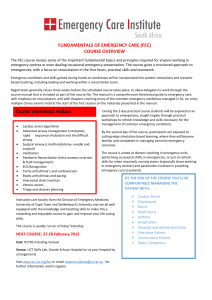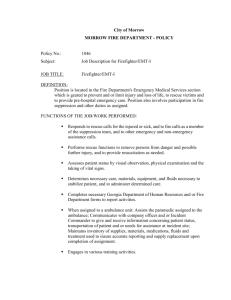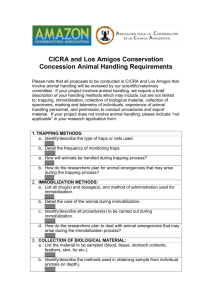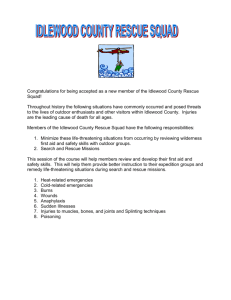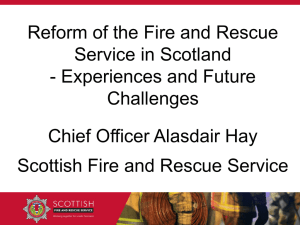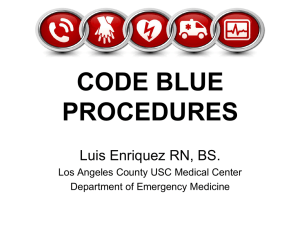Paremedic (Morrow) - Georgia Municipal Association
advertisement
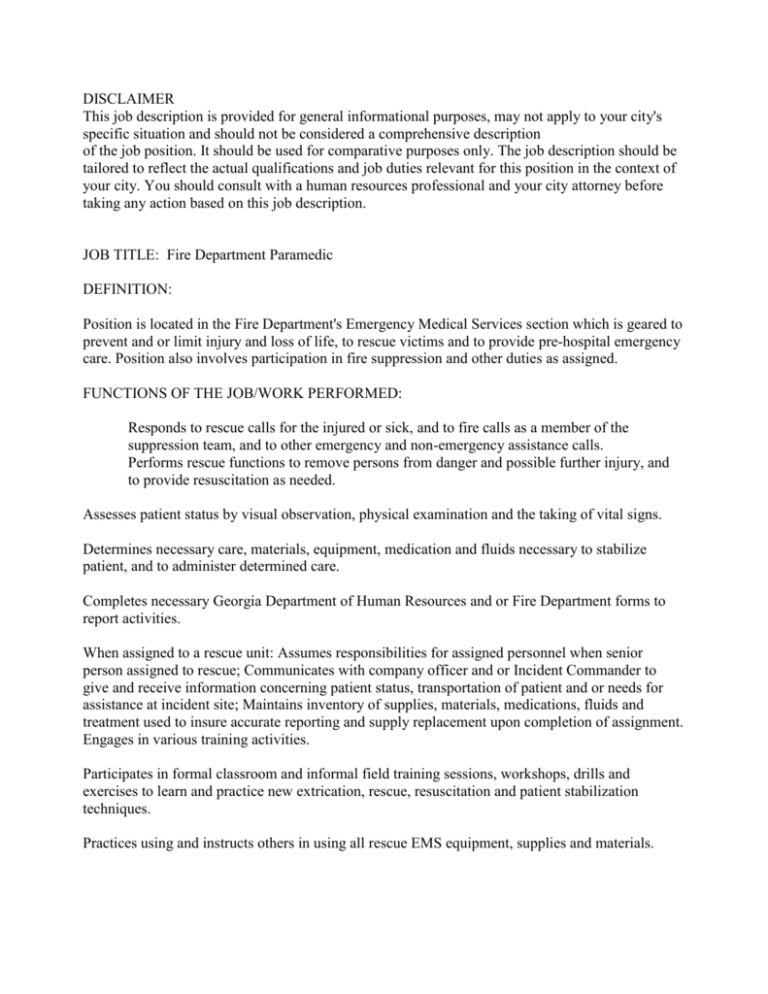
DISCLAIMER This job description is provided for general informational purposes, may not apply to your city's specific situation and should not be considered a comprehensive description of the job position. It should be used for comparative purposes only. The job description should be tailored to reflect the actual qualifications and job duties relevant for this position in the context of your city. You should consult with a human resources professional and your city attorney before taking any action based on this job description. JOB TITLE: Fire Department Paramedic DEFINITION: Position is located in the Fire Department's Emergency Medical Services section which is geared to prevent and or limit injury and loss of life, to rescue victims and to provide pre-hospital emergency care. Position also involves participation in fire suppression and other duties as assigned. FUNCTIONS OF THE JOB/WORK PERFORMED: Responds to rescue calls for the injured or sick, and to fire calls as a member of the suppression team, and to other emergency and non-emergency assistance calls. Performs rescue functions to remove persons from danger and possible further injury, and to provide resuscitation as needed. Assesses patient status by visual observation, physical examination and the taking of vital signs. Determines necessary care, materials, equipment, medication and fluids necessary to stabilize patient, and to administer determined care. Completes necessary Georgia Department of Human Resources and or Fire Department forms to report activities. When assigned to a rescue unit: Assumes responsibilities for assigned personnel when senior person assigned to rescue; Communicates with company officer and or Incident Commander to give and receive information concerning patient status, transportation of patient and or needs for assistance at incident site; Maintains inventory of supplies, materials, medications, fluids and treatment used to insure accurate reporting and supply replacement upon completion of assignment. Engages in various training activities. Participates in formal classroom and informal field training sessions, workshops, drills and exercises to learn and practice new extrication, rescue, resuscitation and patient stabilization techniques. Practices using and instructs others in using all rescue EMS equipment, supplies and materials. Work activities are assigned through specific instructions for one-time and non-repetitive tasks. Standard operating procedures and accepted medical practice indicate tasks to be accomplished in recurring assignments. The employee uses initiative and judgement in carrying out recurring assignments without specific instructions, referring significant deviations form standard operating procedures to the supervisor. Work is spot-checked while in progress and upon completion for compliance with departmental, city, state and federal regulations, policies and guidelines. Directs and supervises on a limited basis. REQUIRED KNOWLEDGE, SKILLS. ABILITIES AND OUALIFICATIONS: Knowledge of: Patient assessment including topographic anatomy, diagnostic signs, vital signs and patient surveys to include subjective and objective findings. Airway care, pulmonary arrest and cardiac arrest resuscitation procedures to include CPR, airway control and ventilation, which includes the usage of but is not limited to: (a) Oropharyageal airways, (b) Nasopharyugeal airways, (c) Esophageal obturator airway, (d) Chest decompression techniques, (e) Cricothyroidotomy techniques. Respiratory emergencies and how to differentiate them and proper intubation procedure techniques. Anatomy and physiology of human body systems as they relate to disfunction and non-function of various processes and the effects of trauma on such systems. Wound and hemorrhage control, to include types and classification of wounds, with thorough understanding of shock processes, their prevention and treatment. Intravenous therapy, its indication and contra-indications to include types of fluids, their administration, delivery systems and complications, which includes but are not limited to: (a) Routine administration sites, (b) External jugular vein, (c) Intraosseous techniques. Pharmaceuticals which would include the proper and generic names of drugs; the proper dose (ages); routes of administration; contraindications for the usage of same; actions of the drug; any possible allergic reaction of the drug and appropriate medical reversal treatment. Cardiac functions as to differentiate cardio and myo related problems; the application of 3 or 10 lead electrodes; the reading and interpretation of EKGs; equipment needed and its settings for defibrillation or cardioversion. Assessment procedures in soft tissue and internal organ injuries to include multi-system trauma management utilizing extensive anatomy and physiology training to apply proper care techniques. Injuries to the musculo-skeletal system to include types of fractures, sprains, strains and dislocations; their assessment, immobilization and transport. Injuries to the head, face, neck and spine, including assessment, immobilization, dressing and transport. OB-GYN emergencies, their assessment and treatment to include pre-delivery, delivery, postdelivery and newborn resuscitation. Pediatric emergencies which include but are not limited to: (a) Respiratory distress and or arrest, (b) Cardiac distress and or arrest, (c) Medical dysfunction and or illness, (d) Traumatic injuries and or arrest. Environmental emergencies to include burns from thermal, electrical and radiation sources; cold injuries; chemical injures and their assessment and treatment. Multi-casualty operations to include triage, transport and EMT functions at the various stages of the care process. Extrication procedures to include patient care, immobilization, packaging, removal and transport; utilizing powered and non-powered equipment to effect extrication. Emergency vehicle operations and communications to include statutes governing operations, phases of calls, operation of on-board equipment, communication operations and economy of communication usage. Knowledge of the policy, procedures and guidelines of the City of Morrow and the Morrow Fire Department. Skill in: Patient assessment techniques to include topographic anatomy review, diagnostic signs and the taking of vital signs. Application of CPR, airway control, ventilation and oxygen therapy techniques. IV therapy administration and maintenance. Splinting, bandaging, MAST immobilization and hemorrhage control techniques. Application of shock therapy and packaging techniques. Patient communications and reassurance techniques. Use of powered and non-powered extrication tools. Operation of emergency vehicle and on-board equipment. Working effectively in physically demanding and psychologically stressful situations. Effectively communicating with others including co-workers, supervisors, and the general public, often in highly stressful situations. Contact with co-workers involve a high degree of teamwork and require close interaction for extended periods of time. Contacts also include the general public in both emergency and nonemergency situations. Abilities in: Work involving frequent lifting of heavy objects, bending, crouching, standing, occasional climbing with heavy loads, working in confined or enclosed spaces, and operating equipment requiring a high degree of accuracy and dexterity. Qualifications: High School Diploma or equivalency. Georgia Drivers License Georgia Certified Basic Emergency Medical Technician. Georgia Composite State Board of Medical Examiners Certified Paramedic/Advanced EMT. American Heart Association Basic Life Support Course C. American Heart Association Advanced Cardiac Life Support and other certification as may be required by the federal, state or local jurisdictions involved.
